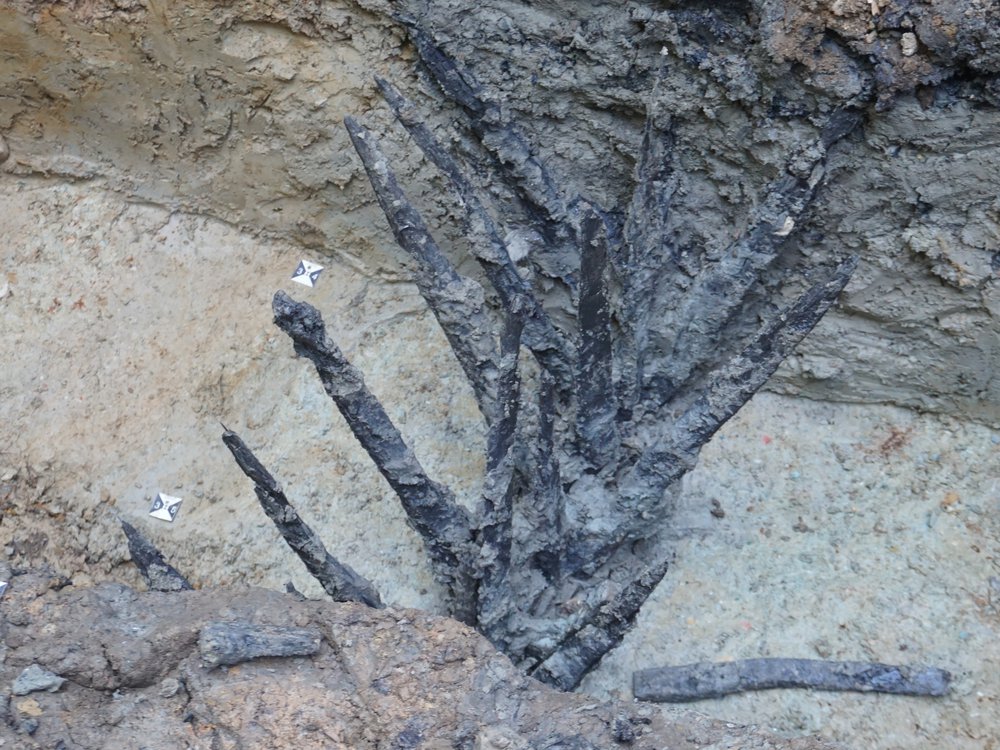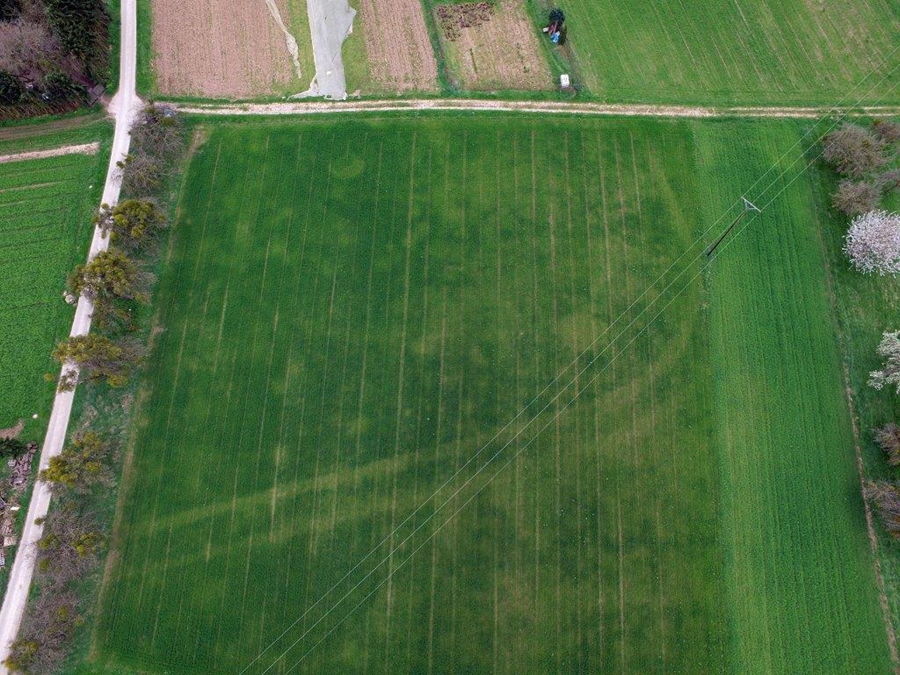Archaeologists Discover Wooden Spikes Described by Julius Caesar
Until recently, no traces of the military technology had ever been found

When Julius Caesar undertook his legendary military campaign in Gaul during the first century B.C.E., he wrote about small, sharpened wooden stakes that would line the fences of his camps—an ancient Roman version of barbed wire.
Until this year, no examples of this military technology had ever been found. Now, for the first time, researchers from Goethe University in Frankfurt, Germany, have discovered an intact artifact. And in the process, they’ve dispelled a 130-year-old assumption about the area’s history.
The spikes were located in what is now the German town of Bad Ehms, where archaeologist Frederic Auth has led excavations since 2019, according to a statement from the university.
Archaeological interest in the site goes back much further. In 1897, exploratory digs in Bad Ehms unearthed processed silver and metal slag. As a result, researchers thought that the site had once housed a Roman smelting operation.
This theory was also supported by the nearby presence of the Limes, a fortification that made up part of the northern border wall of the Roman Empire. Researchers assumed that the Limes, built in 110 C.E., and the smelting operation were connected.
For more than a century, this theory wasn’t challenged. But in 2016, a local hunter made a strange observation in Bad Ehms: A grain field had unusual color differences indicative of “subsurface structures,” reports Karen K. Ho of ARTnews.

When researchers photographed the field with a drone (which was aptly named Ehrlich, German for “honest”), they discovered a long stretch of tracks that looked like those left by a tractor.
In reality, write the researchers, “it was a double ditch that framed a Roman camp.”
Since then, excavations have uncovered two previously unknown military camps in the area. And this year, per Live Science’s Kristina Killgrove, researchers discovered the wooden spikes in the second camp. They also found a coin minted in 43 C.E.—evidence that this site predated the Limes.
These discoveries led to new questions. The researchers write that “the camp, apparently once intended as a solid build, was never completed. … Burn marks show that the camp was burned down after a few years.” Why was it dismantled so soon, and what purpose did it serve?
The researchers formed a new theory based on the writings of the Roman historian Tacitus: Around 47 C.E., the Roman governor Curtius Rufus was attempting to mine silver in the area.
At the site, the researchers say they were “able to identify a shaft-tunnel system suggesting Roman origins.” They now suspect that the defense of this operation could explain the spikes and the camp.
The mining endeavor, however, was not successful. It shut down a few years after it began, which could explain why the camp was incomplete.
The real kicker is that silver ore was buried in the area where the Romans were digging. According to Markus Milligan of Heritage Daily, the Roman tunnel “falls short of the Bad Ems passageway by only a few meters, a large deposit that in modern times has yielded 200 tons of silver.”
The Goethe University experts say that more research is needed to confirm their theories. For now, the wooden spikes will be housed in the Römisch-Germanisches Zentralmuseum in the city of Mainz.